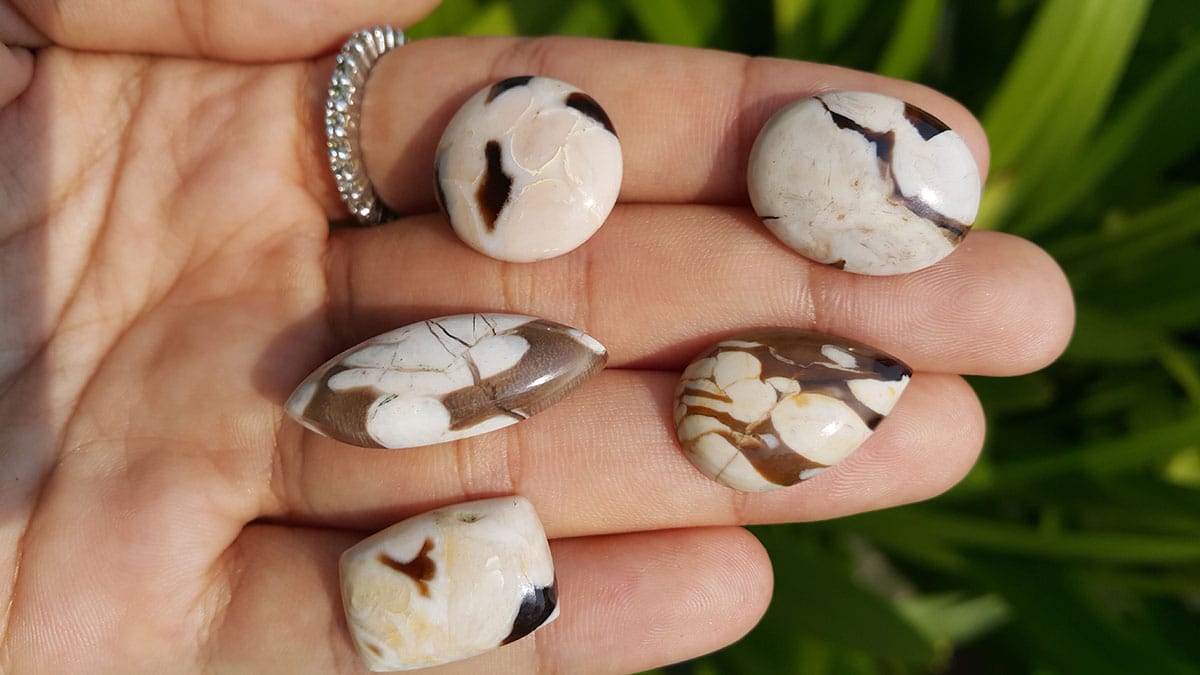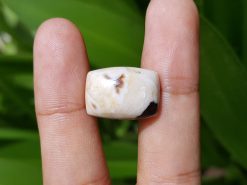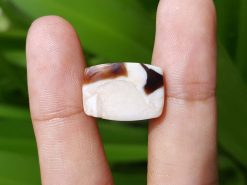Peanut wood

Peanut wood jasper stone healing properties for jewelry
Buy natural mpeanut wood in our shop
Peanut wood is a variety of petrified wood that is usually dark brown to black in color. It is recognized by its white-to-cream-color markings that are ovoid in shape and about the size of a peanut. It received its name from these peanut-size markings. It is a fossil gem with a very unusual history.
Source
Much of the peanut wood being sold today began its life as a conifer tree on land in the area now known as Western Australia. When these trees died, rivers carried them into a shallow, salty epicontinental sea that covered much of what is now the Australian continent.
They arrived at the sea as a piece of driftwood. This was during the Cretaceous time period, when a species of marine clam that loved to eat wood lived in the Australian sea. The clam larvae were able to smell nearby wood and swim to it.
When they arrived at a piece of driftwood, they would attach themselves to it and start eating. A tiny pair of valves soon developed on one end of their long body, and they used the sharp edges of their shell as a rasp. They shaved off tiny particles of wood – which they would promptly eat. In a few weeks they could excavate a deep tunnel into the soft, mushy wood.
A few species of these wood-eating clams live in the oceans today. Sailors have cursed about them for hundreds of years as the enemy of wooden ships. Sailors began calling them “shipworms” because of their long bodies and their ability to tunnel into a ship much like a worm tunnels through an apple.
In the 1700s, shipbuilders began lining the hulls of their ships with thin sheets of copper to protect them from the shipworm. Shipworms have been ruining ships, pilings, docks, retaining walls, and other wooden structures for as long as people have been placing them in salt water.
Peanut wood jasper stone healing properties
We attribute peanut wood to transformation, particularly in transforming past pain or trauma into purpose. You can also work with it while you are healing from a physical injury. This stone reminds that bad things that happen can lead to good things in the future, that our scars can be beautiful and serve a greater good.
Natural peanut wood
Natural peanut wood for sale in our gem shop
We make custom made peanut wood jewelry as engagement rings, necklaces, stud earrings, bracelets, pendants… Please contact us for a quote.
We make peanut wood jasper jewelry


